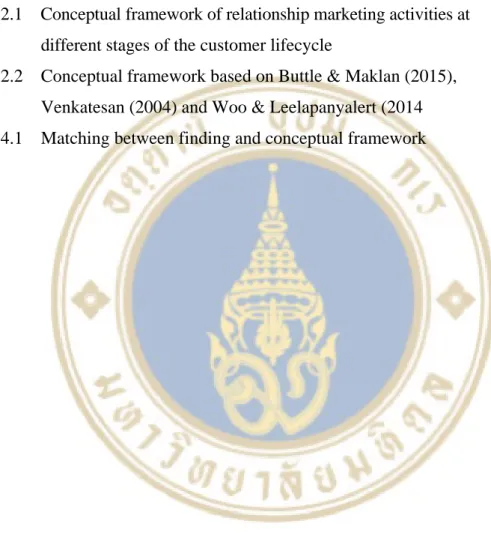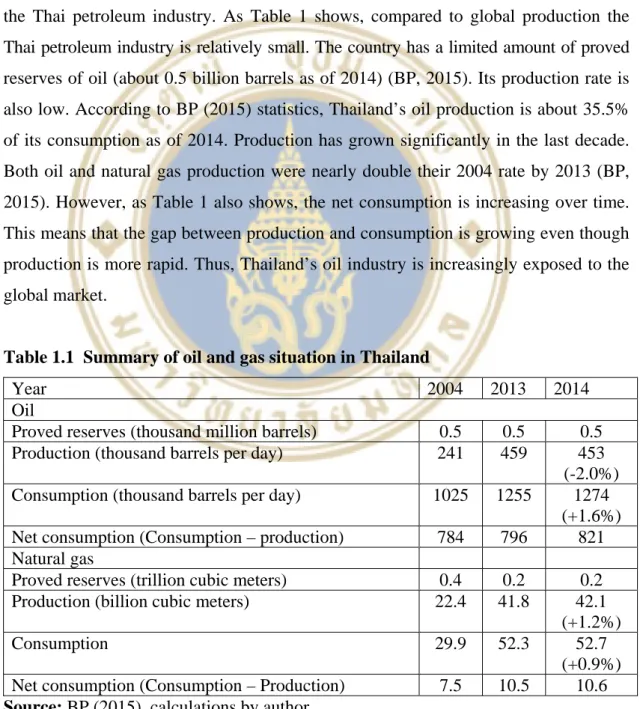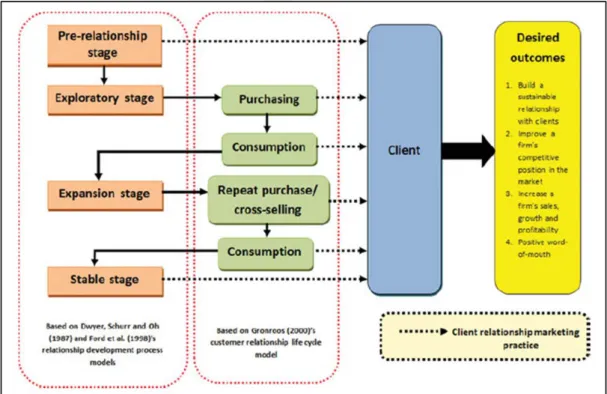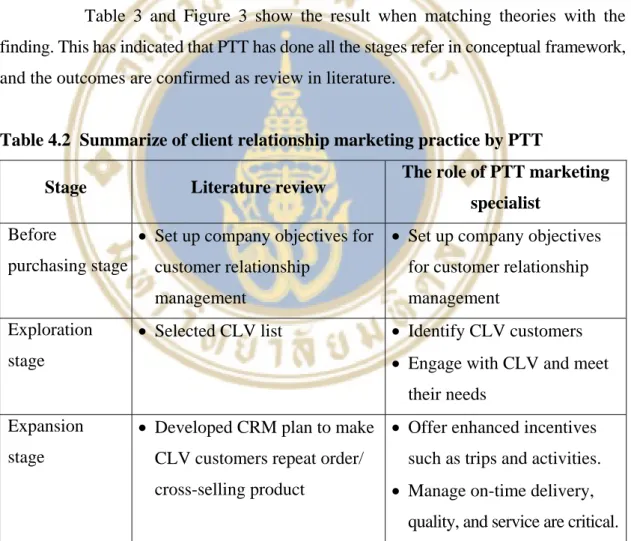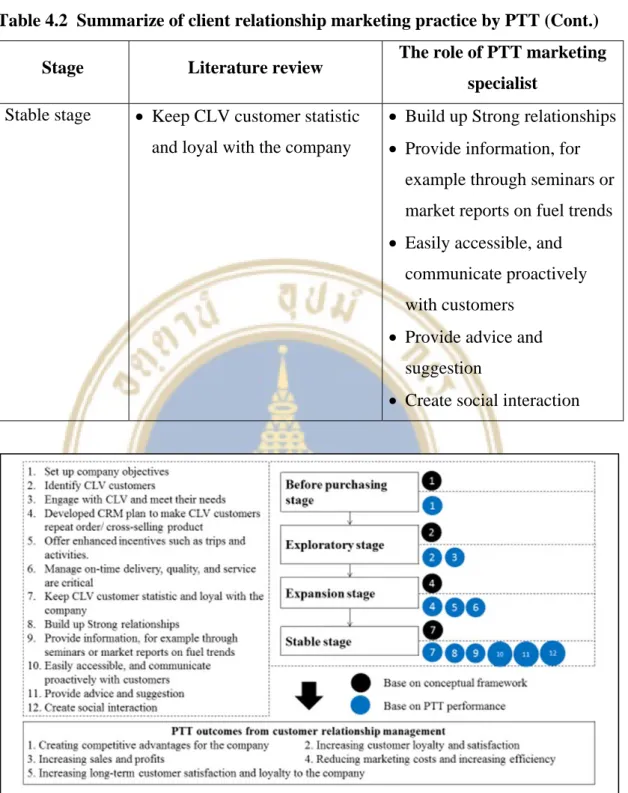Because of this difference, it is important for companies in the oil industry to focus on the most valuable customers and try to retain them (Gloy, et al., 1997). One study suggests that this is because the oil industry's customers are relatively small (Banerjee, Dasgupta, & Kim, 2008). There have been no previous studies on customer or customer relations in the oil industry in Thailand.
This paper aims to investigate how a Thai company builds customer relationships with its customers by focusing on the oil industry.

LITERATURE REVIEW
Theoretical Foundation
- The importance of Relationship Marketing
- Building customer relationships
Consequently, one of the important aspects of customer relations is the selection of customers and firms. Importantly, the customer relationship efforts of the firm are directed at the most valuable potential customers. CLV is an estimate of the total value of the customer to the firm over the course of the relationship (Venkatesan, 2004).
Research has shown that some of the most effective uses of relationship marketing are when the customer initiates a relationship with a specific person (such as a company representative or a service provider) and when relationships are more important (such as channel sales or service providers). , Dant, Grewal, & Evans, 2006).
Conceptual Framework Development
CLV refers to the total value of the customer over the lifetime of the company-customer relationship (Buttle & Maklan, 2015; Venkatesan, 2004; Woo & Leelapanyalert, 2014). The CLV list and CRM plan established in the initial phase interact with the customer lifetime. The results (including stable relationships, increased profitability, good reputation and customer references) are the result of the interaction led by CRM throughout the customer's lifetime.
A CRM plan serves to move a customer through the customer lifecycle and drive positive results.
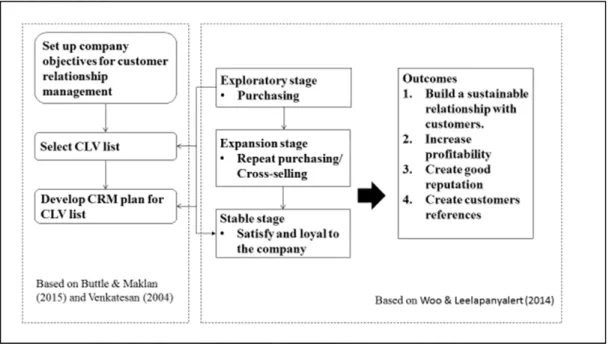
METHODOLOGY
Research Approach
Data Collection
Data Analysis
FINDINGS
- Interviewee Background
- Attitude toward Customer Relationship Management (CRM) The first theme explored was attitudes toward CRM. All interviewees agreed
- CRM in the Company
- Effectiveness of CRM and Outcome of CRM Activities
- Suggestions and Future Plans
- Summary of Findings
- Discussion
They identified strong relationships and internal training as well as good internal support for the CRM program and the development of specific customer requirements as contributing to its success. The main benefit to the company cited by most participants was increased sales and profits, driven by higher customer retention and loyalty rates and greater success in acquiring new customers. Although a CRM program is designed to benefit the company, it also benefits others.
Key benefits for the firm included increased sales and profits, higher customer loyalty and higher customer retention. The CRM objectives the company set included increasing sales and profits, as well as building long-term customer relationships and customer loyalty. These are in line with the objectives identified by Woo and Leelapanyalert (2014) for the implementation of CRM in companies.
There is also evidence that a company's CRM program has followed its customers through the customer life cycle, from the exploration stage (purchase) to the expansion stage (repeat purchases and cross-selling) to the stable stage (customers are satisfied and loyal). The interviews explained that the PTT CRM program led to increased customer satisfaction and loyalty, as well as benefits for both the customer and the vendor. There is also some evidence that PTT programs are designed to increase customer trust in the company (Ndubisi, 2007).
For example, the company does not use an automated process to extract maximum value from each customer transaction, as with airline ticket sales (von Martens & Hilbert, 2011). Instead, the company has created its own approach, focusing on long-term personal relationships with customers.
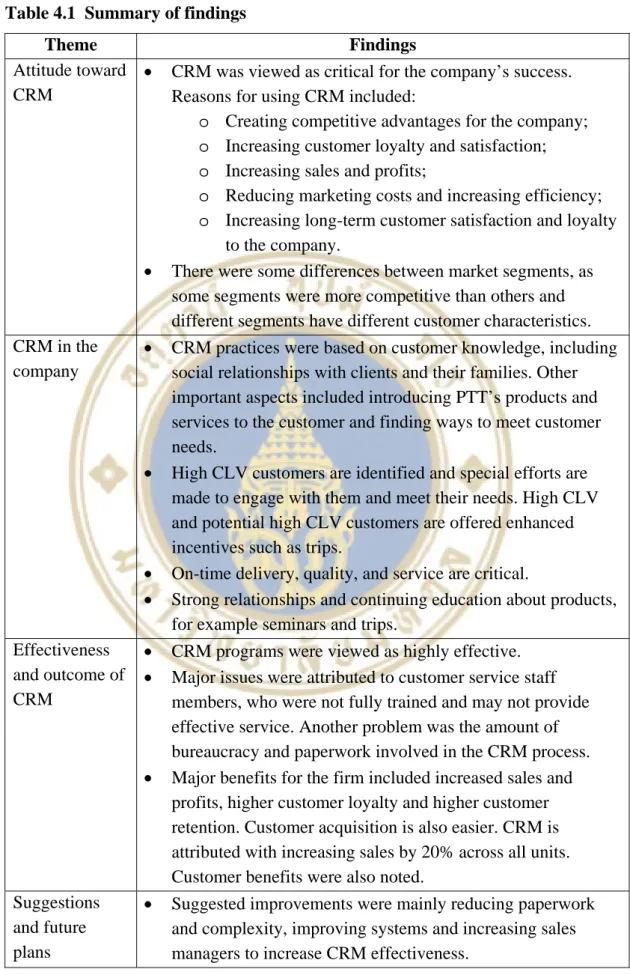
CONCLUSION
Conclusion
The CRM program was also seen as a way to maintain competitive advantage and to meet customer needs and ensure they remain loyal. The CRM program was thus a way to differentiate the company in the eyes of the customer. Focusing on the customer meant that the CRM program began with a process of learning about the customer and their needs, as well as their value to the company.
However, the firm did not use a specific CRM program for high-value customers, but instead emphasized individual and social relationships. Participants noted that the program had an estimated success rate of 80% to 90% in terms of customer loyalty and other measures. It also succeeded in increasing sales, with one participant estimating a 20% increase in sales from the program.
In conclusion, CRM has been a very effective strategy for PTT to increase sales and profits and generate customer loyalty. In the long run, this will increase the firm's competitive advantage as it retains customers and increases their customer lifetime value. Thus, although the program has some costs, it also has some important benefits for the firm as well as for the customers themselves.
Although the company still needs to ensure the quality of service and products and on-time delivery, a CRM program is an important tool for a company in identifying and meeting customer needs.
Managerial implication
Other companies could also benefit from the introduction of CRM strategies, especially those operating in highly competitive industries. These companies can especially benefit from building trusting relationships with customers and going the extra mile to meet their needs.
Theoretical Implication
Understand the effect of customer relationship management efforts on customer retention and customer share development.
APPENDICES
Appendix A: Interview Questions
Appendix B: Interview Result
Position: Area Manager
Although the price we offer is low, but if we do not build any customer relationship, there is a high risk of losing customers to competitors. Answer: We build a relationship with customers by spending about three months getting to know them. In addition, the gift and meal offering approach would give an opportunity to strengthen the relationship with them.
Answer: Yes, the main objective of customer relationship building is to maintain good relations with them. Answer: The company should reduce paper work for sales managers so that they have more time to visit customers and strengthen the relationship with them. Answer: It is important to build a relationship with clients because I feel more comfortable and reduce the complexity of the process.
Answer: The goal of customer relationship building is to create a long-term relationship with them. In terms of quality assessment, every quarter the customers' retail gasoline business will be audited to check the standard, sales target and whether they have purchased anything from a competitor. Conducting the seminar off-site is also a response to the needs of customers, as they like to go on a trip.
Answer: I have been working at PTT for 33 years, and my responsibility is to pay client visits and evaluate clients' businesses to give and line of credit. Answer: Relationship with customers is extremely important as if there is no customer; there is no business. Answer: First, we need to research about customers' company, especially about financials.
Answer: The result of good relations with customers is that more information is exchanged between the company and customers.
Position : Area manager
Is there anything you think your company should do to improve customer relationship management in the future? Answer: I would suggest reducing the cost of paper works, ideally going paperless. Answer: I want to maintain long-term relationship with customers as the competition is very high.
What are the activities you do to create repeat orders or cross-selling orders? What are activities you do to keep the customer satisfied and loyal to your company. How do you rate your customer relationship management, such as needs improvement, good or excellent.
Answer: I think PTT has a good customer relationship management system, so the only suggestion I have is to set up activities between sales and customers like CSR or temple trips. Are there results of benefits in adopting customer relationship management activities in terms of building sustainable customer relationship, increasing profitability, building good reputation and generating customer references. Answer: The results of customer relationship building are the total sales we get from customers.
By providing good service, we would be at the top of the seller's list that they would repeat the purchase order. From the experience, good relationship with customers increased the sales volume by 20% of all products.
Position : Finance Officer, Industrial credit division
What activities do you do to keep customers satisfied and loyal to your company. For example, I couldn't make some document in time for the appointment date, but client with whom we have a strong relationship helps to push the deadline for me. Answer: PTT should increase the employees for the better service or decrease the customers for each employee to take care of because one employee has to look after too many customers so I can't serve all customers.
Well-trained staff have a system in place to listen and monitor call center agents as they answer customer questions. I need to keep developing the customer care process to answer all customer inquiries. For example, taking order from customer, processing order, sending product to customer, sales after service, taking care of customer and solving the problem for customer.
However, PTT always continues to develop and improve customer relationship management for the best service, depending on changing customer behavior. However, if the price is quite comparable, the customer will consider the company's stability and relationship. For example, by holding an academic seminar on whatever topic interests the customer or on a useful topic related to the customer's activities.
Also, special gifts such as high-class wine were given on special occasions, such as a New Year's gift. However, only a phone call with occasional visits will be available for the general customer.
